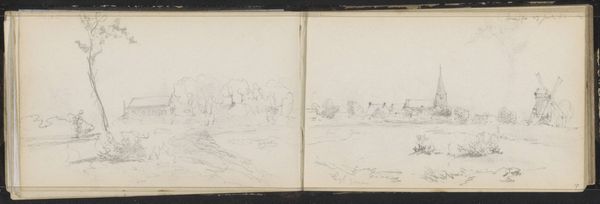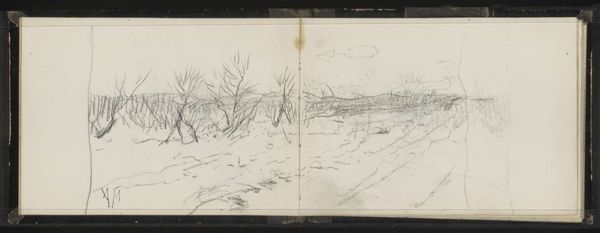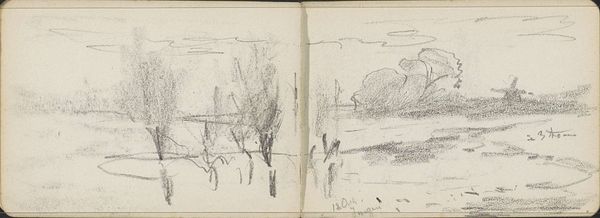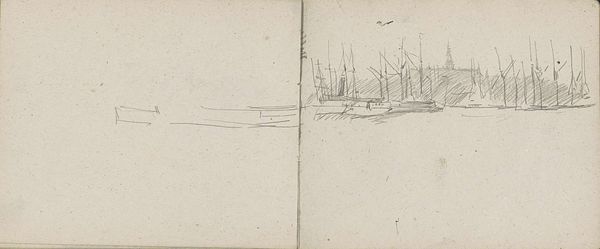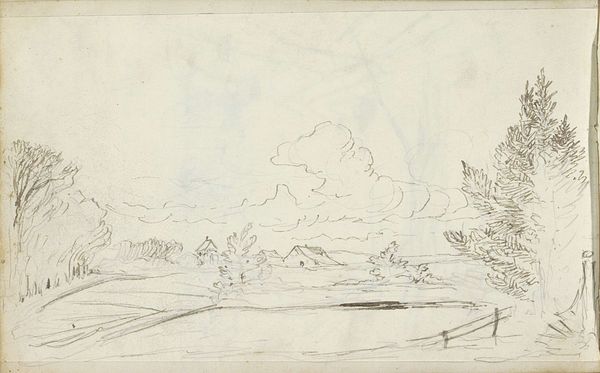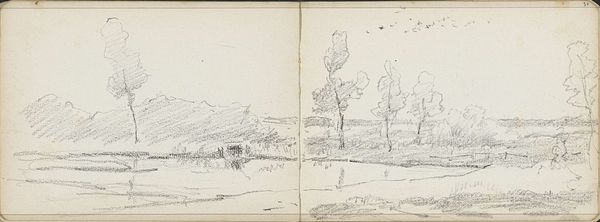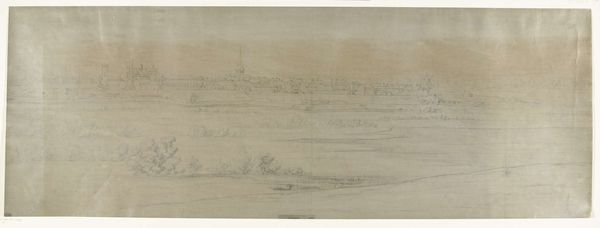
drawing, paper, pencil
#
drawing
#
landscape
#
paper
#
pencil
#
realism
Dimensions: height 158 mm, width 247 mm
Copyright: Rijks Museum: Open Domain
Editor: This is Willem Cornelis Rip’s pencil drawing, “Kleiweg bij Rotterdam,” possibly from 1876. It’s a pretty unassuming landscape, quiet, maybe a little bleak. The road cuts across the composition with a lone figure walking away from us. What do you see in this piece? Curator: I'm drawn to that solitary figure and the winding road, its curve almost snake-like. Roads often serve as powerful symbols in art, representing journeys, choices, and the passage of time. Consider how the figure is deliberately placed moving away from the viewer. Editor: They're walking away, towards the horizon... What does that signify? Curator: Is it hope or despair? The distant horizon suggests a destination, a future. Yet, the starkness of the landscape, the bare trees, it all creates a feeling of vulnerability. Do you feel any emotional pull? Editor: I feel some loneliness. Is it something about the weather and empty space, the stark quality of the drawing itself, or is that an intended cultural idea? Curator: It's a combination. Remember the 19th century was a time of huge social change, industrialization, and urbanization. People in that time were concerned about being estranged from one another. It is that sense of isolation or maybe possibility. The artist seems to capture the cultural anxiety perfectly. Does it suggest a shared feeling? Editor: Absolutely. The figure, while small, becomes a potent symbol of the human condition. Curator: Indeed, Rip uses the mundane landscape to represent broader existential themes that persist to this day. Editor: It’s funny, I just saw a Dutch countryside. But with that cultural context, it feels more universal now. Thanks for making that connection.
Comments
No comments
Be the first to comment and join the conversation on the ultimate creative platform.
